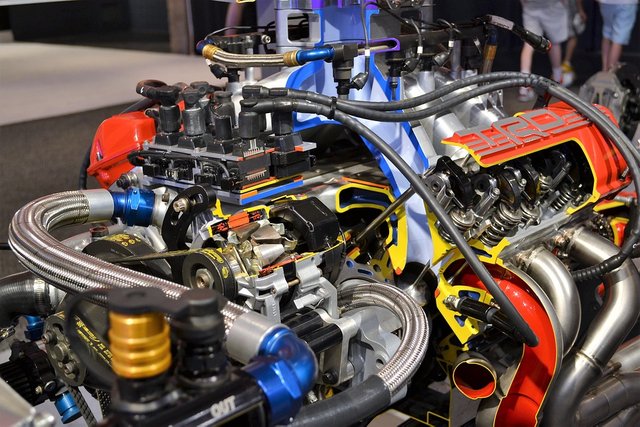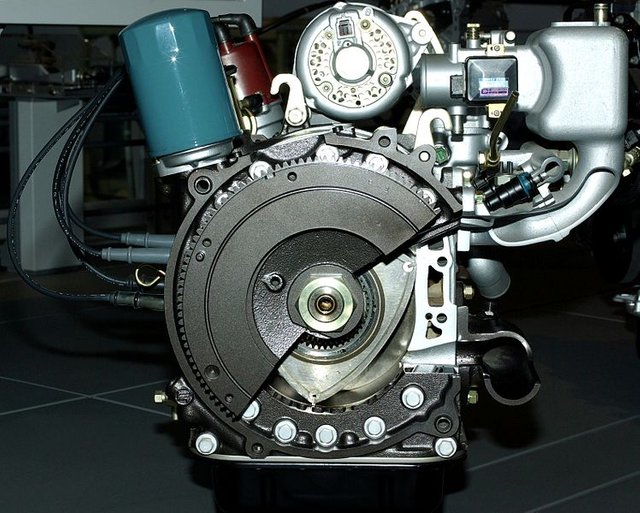The difference between pistons and rotary engines

Majority of cars that you will see on the street will always have one thing in common. More performances orientated or larger vehicles will likely feature engines with far more cylinders and a variety of configuration such as the inline 5, straight 6, v6, v8, v10, v12 and even the w16.
while all this engine will perform differently, they all go about their business in the same way.
The Rotary engine, however, is the black-sheep of the engine world. whose approach to suck, squeeze, bang and blow is wildly different.
To understand these differences let this article be your guide
How a normal engine works

For a normal piston engine to produce power, it must perform this four functions.
sucking air into the engine
compresses the sucked air and fuel mixture
ignite the mixture of the compressed air and fuel
And finally expel the burnt air and fuel mixture into the exhaust system
N/B: The engine under the hood of 99.9% of the cars that we see on daily will execute this process using piston and cylinders.
Explaining these process
First the piston will descend, drawing air into the cylinder by opening the intake valve and at the same time, fuel is injected into the cylinder. This process is also known as the intake stroke.
As the piston travel back up the cylinder, the air and fuel mixture is compressed, which increases its temperature after which a spark ignites the air and fuel mixture to force the piston back downward. This can also be referred to as compression and ignition stroke.
As the piston rises again, the burnt air and fuel mixture is forced out of the cylinder through an opening, which is known as the exhaust valve into the exhaust system.
Diesel engines work in much the same way except for one thing.
Instead of a spark igniting the air and fuel mixture, a diesel engine compresses and thereby heats the air and fuel mixture more greatly. meaning that it ignites without the need for a spark.
N/B: The only exception here is in the startup process were a glob plug is needed.
It's this process of suck, squeeze bang and blow in traditional petrol engines that make your car moves while the crankshaft is the one that carries the piston power from the engine to the wheel
How a rotary engine works.

This engine works on the same four-stage basic.
The air and fuel mixture entries the chamber and is then compressed, after which a spark ignites the mixture and finally, the burnt air and fuel mixture is forced out into the exhaust system.
So it is still the same suck, squeeze, bang and blow.
The way in which the rotary engine goes about this process is very different. However, this is because of the absent the cylinders or piston. Instead, a big rotor does all the hard work. And at times people refer to this rotor as dormitory because of its shape.
Explaining the rotary engine
If we are looking at a simple rotary engine we will find five component namely:
Front plate
Rotor housing
Rotor
Rear plate
And the fifth component is the eccentric shaft which connects to the rotor, act like the crankshaft in a traditional engine.
The rotor housing that the rotor site in features an intake port, two spark plugs and an exhaust port. As the rotor spins, it creates a vacuum over the intake port which sucks air and fuel into the chamber.As the rotor continues round, it covers the intake port after which the air and fuel mixture is then compressed at the equivalent of torque sent in a piston engine
Two spark plug fires, forcing the rotor round further until it reaches the exhaust port to expel the burnt air and fuel mixture.
Advantages of piston engine
This engine is tried, tested, reliable and can be used for a weird verity of applications. Most commonly in inline or V configuration, the piston engine is :
Easy to maintain
Don't burn much oil
And are also very economical
Disadvantages of piston engine
They have a lot of moving parts. like the piston, intake, exhaust valve and the camshafts which result in a lot of reciprocating mass. This simply means that these engines are rev-limited, due to the danger of valve float. where the valve spring can no longer keep up with the movement of the camshaft.
Another downside of this engine is that they are very large, especially in the inline configurations.
These engines don't learn them self to front wheel drive cars or cars with small engine base.
This is where the need for the packaging of the v6 opened up six(6) cylinder usage to most cars.
Advantages of the rotary engine
One of the biggest benefits of the rotary engine is that the engine is extremely compact. Meaning that it can be swap into any engine base with space to spare.
A rotary engine also have very few moving parts. Like in some cases of a single rotor unit, we will be looking at two things that actually move, the rotary and the eccentric shaft. Meaning that the rotary engine should be very reliable.
This engine has the ability to rev higher due to the lack of reciprocating masses, and this makes it smoother than a piston engine.
This engine sounds pretty cool
Disadvantages of the rotary engine.
Rotary engines are known for burning too much oil. This is because the oil is injected directly by a turtle control into the rotor housing to keep the seal lubricated and chambers separated. So if you're not on top of oil maintenance, and if a wrong grade of oil is used. it's not uncommon to run a rotary engine dry.
Another major disadvantage of the rotary engine is that all though by nature this engine should be very reliable, you should have probably had of this terms; Blow Apex Seals, follow by a man crying in the corner which is a very bad thing. because they seal the apex of the rotor against the rotor housing. And because they are prone to pitting or cracking, that means that a rotary engine will lose compression. And this will result in misfiring, reduction in power, a bad idle and an engine that is hard to start when cold.
Due to the large combustion chamber a portion of the air and fuel mixture will also not get burnt. which will result in poor fuel economy and high emissions when compared to the traditional piston engine.
N/B: That the tradeoff is that rotary engines will have a tendency to spit flames. So all through rotary engines may sound like a good idea, there are flaws in their design. Thanks to seals that tern to fail and because they burn a lot of oil which result in terrible emissions.
So now you know all about these engines, their differences, advantages and disadvantages. You can now see why the rotary engine is known as the black sheep of the engine family.
Thanks for reading!
until next time!